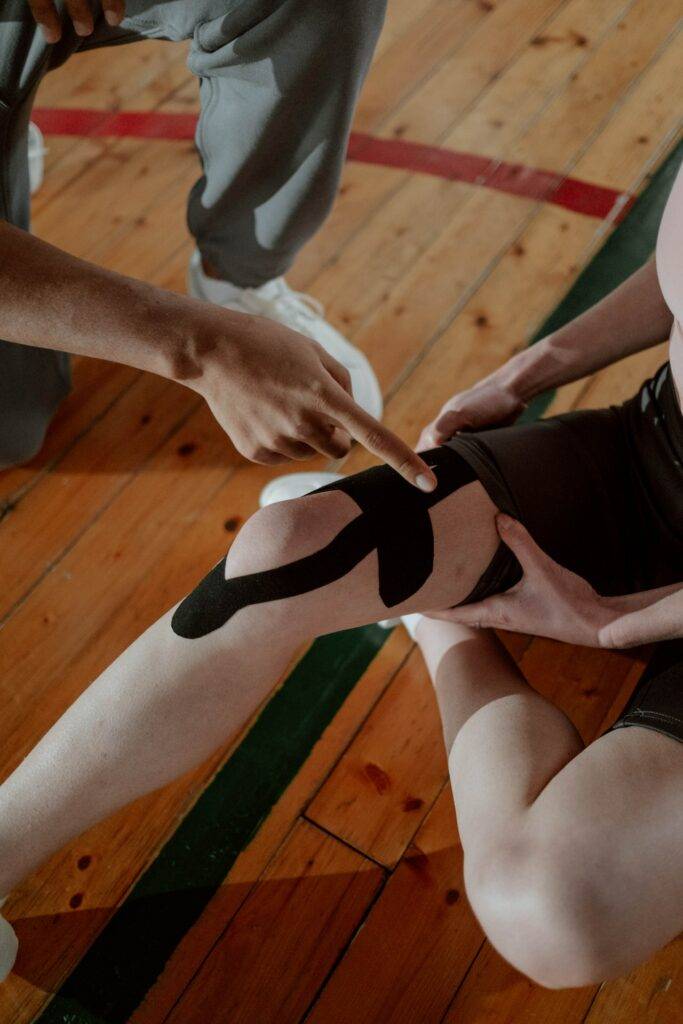
Your knees play a significant role in everyday movement, so damage or injury to any internal parts can affect your quality of life. Out of all four ligaments in each knee, the anterior cruciate ligament (ACL) is the most vulnerable to damage. Studies found that 1 in 3,500 people in the United States sustain ACL injuries, with over 100,000 requiring surgical treatment.
If you experience moderate knee pain while moving and additional symptoms such as swelling and popping knee sounds, you may have an ACL injury and need to see a specialist. Here’s an overview of the different ACL injuries, potential options for ACL repair and reconstruction, and what you can expect from ACL surgery.
What Are the Causes of ACL Injuries?
An ACL injury is a partial or complete tear of the front ligament connecting your thigh bone (femur) to your shin bone (tibia). This often occurs when your knee movement suddenly stops or changes direction, resulting in a tear. ACL injuries are most common among:
- Athletes in sports such as soccer, football, basketball, and other sports where players exert additional strain on their knees.
- Athletes with improper footwear or who use poor-quality sports equipment that affects their knee movement.
- People who wear ill-fitting footwear.
- People who move their knees into unusual positions that can lead to tears or trauma.
- People who get into accidents that result in knee trauma.
Around half of all ACL injuries also include damage to the other cartilage and ligaments in the area.
What Are the Different Types of ACL Injuries?
The ACL runs diagonally opposite the lateral collateral ligament. Together, they control the side-to-side knee movement and prevent unusual motion. The ACL, in particular, prevents the shin bone from sliding and colliding with the front of the thigh bone.
During an ACL injury, the ligament is almost entirely or fully torn, though there are rare cases when the ACL is only partially torn. Injured ACLs can fall under one of three grades based on severity:
- Grade 1 Sprains: The ligament is mildly damaged and stretched but isn’t torn and maintains knee joint stability.
- Grade 2 Sprains: The ligament stretches to the point that it becomes loose and suffers a partial tear.
- Grade 3 Sprains: The ligament is completely torn or pulled directly off the bone. The knee joint is now unstable because of the broken ligament.
To diagnose a partial or complete tear, your doctor will perform two manual tests: a Lachman test and a pivot shift test.
- Lachman Test: Your doctor will try to pull the shin bone from the thigh bone. If the ligament is torn from the bone but still intact, the bones will have little to no movement.
- Pivot Shift Test: While you’re lying down on your back, your doctor will lift your leg and place rotational pressure to see if the bones on your knee shift.
What Are My Non-Surgical ACL Options?
Patients with intact ligaments or partial tears may recover with less invasive treatment plans. Some cases of partial tears may require surgery, but patients are advised to wait in case the ligament heals without surgical intervention. Older patients with less rigorous lifestyles may also opt for non-surgical solutions and adapt even without an intact ACL. Some non-surgical treatment plans include:
- RICE Method: This includes rest, ice, compression, and elevation of the knee.
- Over-the-Counter Pain Relievers: Patients can manage discomfort and swelling through pain relievers.
- Rehabilitative Therapy: Patients may require several weeks of rehabilitative therapy. This may include physical therapy in medical centers and at home and using medical equipment like braces and crutches during the recovery period.
Should I Get ACL Surgery?
ACL surgery is often reserved for more moderate to severe cases of ACL injuries. Patients who receive surgery include:
- Competitive athletes who want to continue playing sports
- Younger patients with active lifestyles
- Patients who have sustained knee injuries that have damaged more than one ligament or cartilage
- Patients experiencing buckling knees
Qualified patients who fall under these criteria can receive ACL reconstructive surgery.
ACL Repair vs. Reconstruction: What’s the Difference?
ACL reconstruction is different from ACL repair. ACL reconstruction surgery is the new standard for treating torn ligaments. The minimally invasive outpatient procedure involves removing the torn ACL and attaching graft tissue taken from a donor’s tendon from your or another person’s body as the new ligament to stabilize your knee joint.
ACL repair, on the other hand, is an older procedure where your ACL is sewn together. This is also a minimally invasive procedure, though not all cases of ACL injuries qualify for this. If your ACL repair fails and tears, it can only be fixed through ACL reconstruction, though it can lead to long-term complications.
What Happens During ACL Reconstruction Surgery?
This outpatient procedure involves removing and replacing your torn ACL with a tendon from donor tissue. This will help your knee’s stability while allowing the full range of motion provided by your original ACL.
Different types of ACL surgery can determine where your donor tissue comes from:
- Autograft: Your donor tissue comes from another tendon in your body, such as your other knee, hamstring, or thigh.
- Allograft: The tissue comes from another person.
- Synthetic Graft: Artificial materials like carbon fiber and Teflon are used in place of organic tendons.
Doctors use arthroscopic surgery to make small cuts around your knee and place the donor graft onto the place where your original ACL is connected. Your surgeon will determine factors such as the graft size and cut.
What Should I Expect After ACL Surgery?
Most ACL surgeries are outpatient, so expect to return home after receiving the signal from your medical provider. It can take around six to nine months to recover from your surgery. If you’re an athlete, going back to play can depend on the type of activity, so consult with your doctor.
Patients may require the use of crutches or a leg brace after their surgery. You may need to receive rehabilitation services through physical therapy to help your knee recover and restore your range of motion.
Like any surgical treatment, there may be some discomfort following your procedure. This can be addressed with medication and other self-care methods. You will need regular follow-up appointments with your surgeon to ensure your recovery is on track.
How Can Georgia Bone & Joint Assist Your ACL Injuries?
At Georgia Bone & Joint, we provide various orthopedic solutions to help you manage ACL injuries. Our practice handles over a hundred ACL procedures annually and provides personalized treatment plans to help you recover.
If non-surgical solutions are ineffective at pain management or treatment, seek out our ACL repair and reconstruction options to help you minimize pain and restore balanced motion in one or both knees.
Call 770-502-2175 or request an appointment online to get evaluated and treated.
